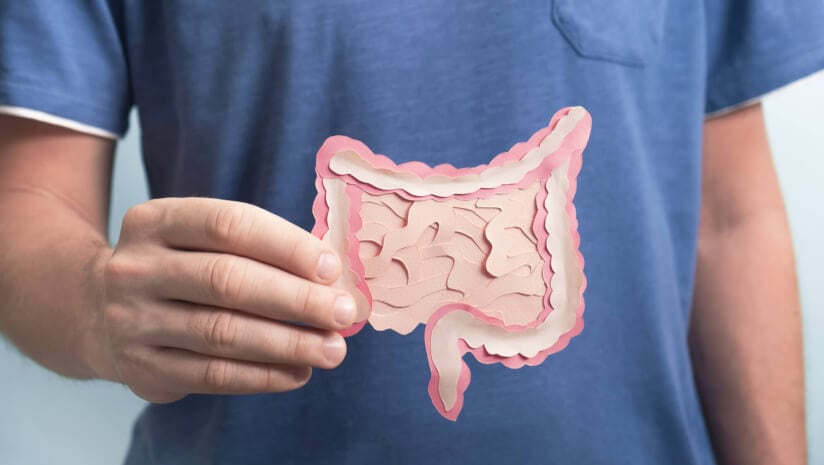The six-month study was conducted by researchers from Yakult Honsha and several Indonesian institutions like Udayana University and Universitas Gadjah Mada’s Center of Excellence for Research and Application on Integrated Probiotics Industry.
Writing in the World Journal of Gastroenterology, they reported that Lacticaseibacillus fermented milk has significantly impacted the gut microbiota after three months of consumption.
A total of 112 participants from three elderly homes in Bali, Indonesia took part in the study.
The participants included both the elderly residing in the homes, as well as staff members. The median age of the participants was 65 years old.
According to the researchers, Bali was ranked third in Indonesia for its proportion of elderly individuals in Indonesia in 2022.
They also pointed out how previous studies have reported that residents of elderly houses in Bali exhibit a less favourable gut microbiome than those in Yogyakarta.
For instance, there was a higher abundance of potentially detrimental bacteria, such as Clostridium perfringens and Enterococcus.
In this study, the participants were randomised to receiving either a fermented milk drink containing over 6.5bn CFU of Lacticaseibacillus commercially sold as Yakult, or an acidified milk placebo.
They consumed one bottle of their assigned drink - equivalent to 65mL - daily at breakfast for six months.
The effects of the fermented milk on the gut microbiome, metabolite production and faecal pH were measured through faecal samples.
Findings showed significant changes to the beta-diversity of the gut microbiome in the probiotic group as compared to the placebo group.
For instance, a significant increase in Bifidobacterium in the probiotic group as compared to the placebo group was seen in the third month of the study.
The number of Bifidobacterium in the faeces sample of the probiotic group increased from 8.3 ± 1.1 log10 cells/g at baseline to 8.5 ± 1.1 log10 cells/g at the third month of the study.
The increase in Bifidobacterium is noteworthy as Bifidobacterium decreases with age and tends to be present in low amounts in the elderly. Bifidobacterium is also a beneficial bacteria associated with digestive and immune health.
“These observed shifts in the gut microbiome have been associated with positive effects on gut and systemic health.
"Bifidobacterium have been linked to improved outcomes due to their immunomodulatory properties and acetate production. Acetate fuels the colonocytes, maintains a robust gut barrier, and prevents pathogen infiltration," said the researchers.
The increase in Bifidobacterium, however, did not persist until the end of the study, as it dropped to 8.1 ± 0.9 log10 cells/g in the faeces samples by then.
On the other hand, a significant increase was seen in the amount of the bacteria Succinivibrio, while a decrease was reported in the Rikenellaceae RC9 gut group in the probiotic group.
Unlike the case for Bifidobacterium, the changes in the amount of Succinivibrio and Rikenellaceae RC9 remained into the sixth-month of the study.
Succinivibrio is a plant polysaccharide-fermenting bacterium that has been reported to exhibit a strong correlation with the production of the beneficial short-chain fatty-acid butyrate.
Rikenellaceae RC9 gut group, on the other hand, has been identified as a detrimental bacterium that contributes to ischemic stroke in a study published last year.
“The study findings indicate that LcS (Lacticaseibacillus) from the probiotic drink significantly impacts the gut microbiota after three months, as evidenced by increases in Bifidobacterium and Succinivibrio and a decrease in the Rikenellaceae RC9 gut group, leading to significant changes in several β-diversity metrics.
“Although the increase in Bifidobacterium appeared transient, alterations in the other two genera persisted after six months," said the researchers.
Rise in stool butyrate concentration
Stool butyrate concentration significantly increased after six months in the probiotic group as compared to that in the placebo group.
The increase in butyrate is important as it is a critical energy source for intestinal cells.
It is also known to reduce inflammation, support immune function, preserve gut barrier integrity, and may lower the risk of colorectal cancer.
During the study, the amount of butyrate detected in stool samples of the probiotic group increased from the baseline of 4.29 ± 3.03 μmol/g to 5.21 ± 3.05 μmol/g at the third month, and 5.04 ± 3.11 μmol/g at the sixth month.
This was a significant increase as compared to the placebo group, in which butyrate concentration was detected at 3.95 ± 2.89 μmol/g at the sixth month - significantly lower than that of the probiotic group.
However, no significant changes were seen in the levels of other organic acid species, pH, and amino acid metabolites in the stool samples of the probiotic group.
No significant changes to stool frequency
On the other hand, fermented milk consumption did not lead to significant differences in stool frequency between the two groups.
However, the researchers also noted that all participants had reported near-optimal bowel movement frequency before the start of the intervention.
Source: World Journal of Gastroenterology
Randomized study of Lacticaseibacillus fermented milk in Indonesian elderly houses: Impact on gut microbiota and gut environment
DOI: 10.3748/wjg.v31.i12.104081.
Authors: Sujaya IN et al





